On the death of Theodosius I in 395 AD. the Roman Empire was divided, dividing its two sons the domains. The eldest, Arcadius, kept the eastern part, with its capital in Constantinople; for the minor, Flavio Honorio, it was the western one, with its capital in Rome. It was the definitive partition and the origin of the subsequent Byzantine Empire, which lasted for almost a millennium until its fall into the hands of the Ottomans, while the old Western Empire was barely able to resist the barbarian attacks for little more than a century, until in 476 the Herulus Odoacer deposed the last incumbent, Romulus Augustulus.
Now, this split did not come out of nowhere; It had its origin in the year 293, when Diocletian tried to tackle the perennial political crisis by establishing an unusual system of government:it was made up of four emperors, two Augustus and two Caesars, in what is known as the tetrarchy.
The crisis of the third century was a period of approximately five decades in which the Roman Empire was shaken by a series of problems that threatened its existence, from the pressure of the barbarians on the borders to the political anarchy caused by the weakness of the central power. , going through a progressive to unstoppable devaluation of the currency to solve the shortage of tax collection that caused a strong inflation and forced to collect in kind.
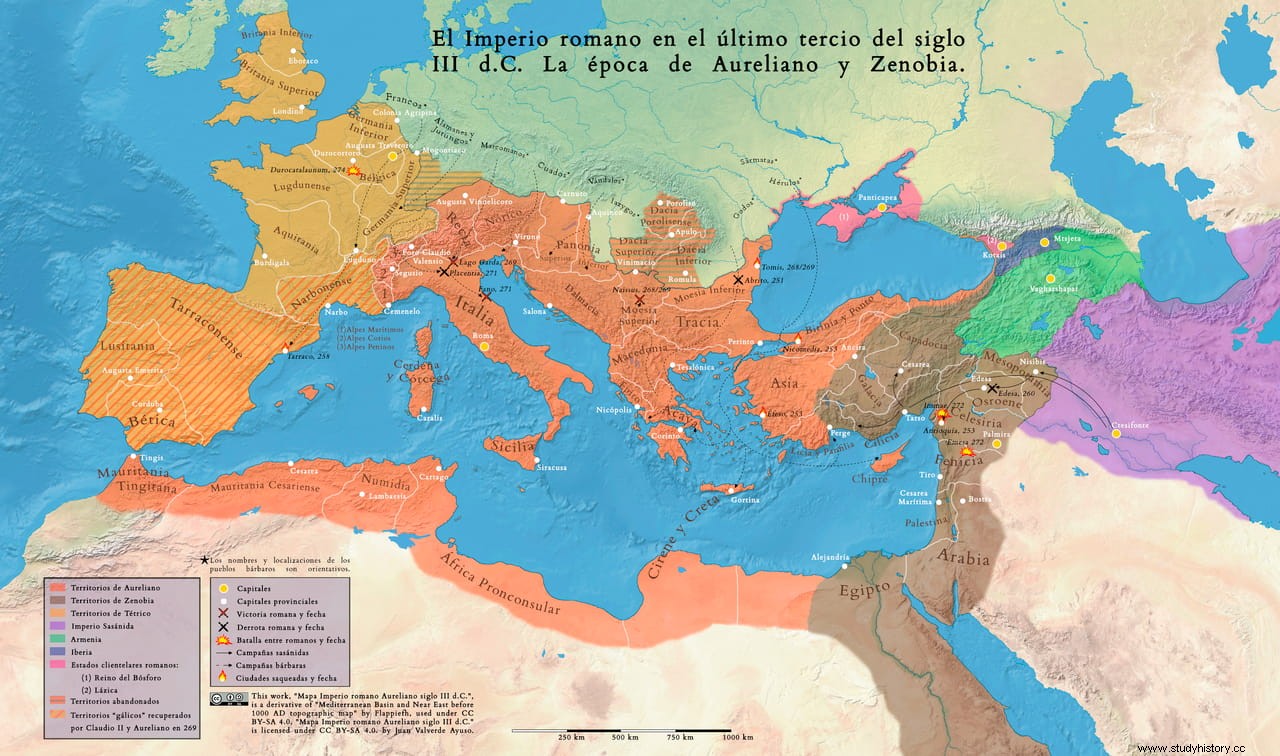
All this had repercussions in a collapse of commerce and the consequent urban exodus towards the countryside -despite the fact that agriculture and livestock also regressed-, where the towns lived in an autarchic regime, which in the long run would be the germ of serfdom and feudalism.
This black panorama began in the year 235 with the death of Emperor Alexander Severus and was not redirected until Diocletian's accession to the throne in 284. As was customary, it was the army that proclaimed him; After getting rid of his rival Carino, he appointed his friend Maximiano as his right-hand man, granting him the dignity of Caesar, although he was soon elevated to Augustus in order to face the military difficulties presented by the Bagaudae -more than bandits, since they came to mint their own currency - and the Mediterranean pirates.
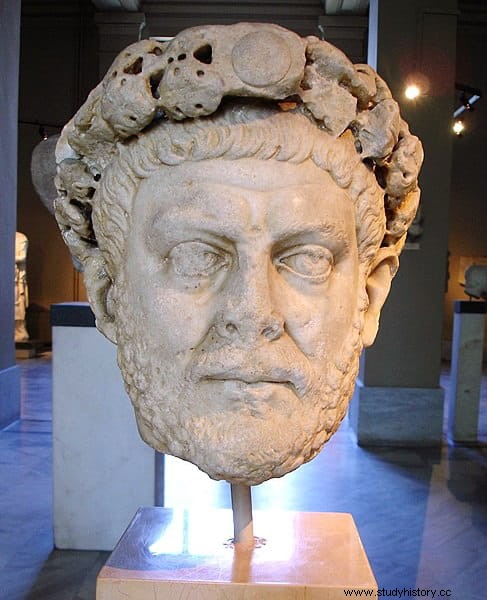
It was, therefore, a diarchy, the distribution of power between two (in which the first was identified with Jupiter and the second with Hercules), something that was not new, since that was how, for example, the Spartan monarchy had worked. and in Rome itself, Marcus Aurelius had introduced it the previous century, naming Lucius Verus Caesar (in 268 the Senate itself tried a senatorial diarchy, although it lasted barely three months).
The system turned out to be insufficient because, although the aforementioned dangers could be curbed - albeit temporarily - others arose on the borders, to which was added an attempted usurpation in Britannia and northern Gaul led by Carausius, the paradoxically had pacified the English Channel region.
It was necessary to increase the number of heads in the imperial direction and, in 293, Diocletian promoted Maximian to coaugustus, giving him control of the western provinces while he reserved control of the eastern ones. In his place, he incorporated two other Caesars, Galerio Maximiano and Constantio Chloro, subject to them respectively. In this way, the diarchy became a tetrarchy.
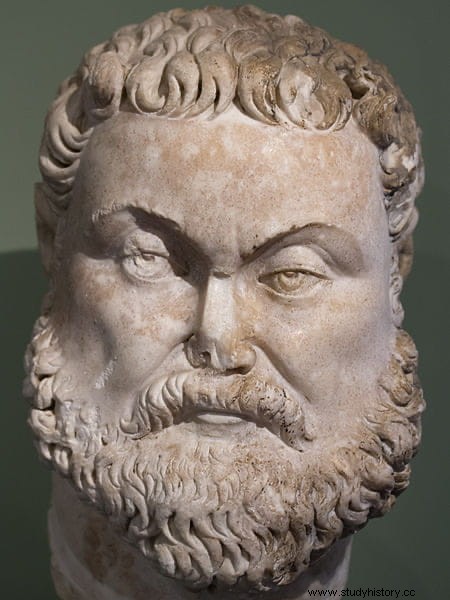
Nor was this a novelty, however infrequent it was:in Judea one ruled after the death of Herod ethe Great and there were also among the Thessalians, the Galatians and the Celts cantiaci of southeastern Britain. The fact is that with this system you could have a direct imperial authority in each important area of the empire, each with its capital:Diocletian ruled the northeast of Asia Minor, the East and Egypt from Nicomedia (the current Turkish Izmit); Maximian did the same with Italy, Hispania and Africa from Mediolanum (today Milan); Constantius dealt with the Rhine and Gaul from Augusta Treverorum (the German Trier); and Galerius administered Greece and the Balkan-Danube region from Sirmium (Serbian Sremska Mitrovica).
Maximian and Constantius also had two important ports:Aquileia on the Adriatic, and Eboracum in Britannia (where Constantius had the extra mission of putting an end to Carausius's usurpation). In reality, the jurisdictions of each one were not precisely delimited and all were subject to the supreme authority (Auctoritas Senioris Augusti ) of Diocletian. However, efforts were made to maintain unity, at least in appearance, following the concept of patrimonium indivisum Hence, Rome continued to be the common link of reference and did not depend on any specific tetrarch but constituted its own Praetorian prefecture.
That is why the tetrarchs are portrayed the same on coins and iconography and only the accompanying inscriptions allow them to be distinguished. The most obvious case, the perfect example, would be the famous sculpture group that today decorates an exterior corner of the Basilica of San Marco, in Venice. Carved on red porphyry, the two augusts are portrayed embracing their Caesars, but without it being possible to know who is who or differentiate one position from another, neither by their features nor by their clothing.

The tetrarchs basically focused their attention on defense, so they used to be on campaign and entrusted administrative matters to an immense bureaucratic hierarchy, which numbered thirty or thirty-five thousand men, partly due to the tendency to divide the provinces. in smaller regions to better control them and optimize tax collection. That civil servant class was headed by a praetorian prefect who ruled over five dioceses (group of provinces), each headed by a vicarius , counting on a staff of subordinates to attend to each section (princeps, cornicularius, numerarii, etc), according to review Notitia dignitatum (a document from the 5th century AD detailing the organization of the Roman administration).
Of course, that the emperors put themselves personally in command of their legions was a risk of death for them and destabilization for the state (either due to a power vacuum in case of falling in battle, or due to a coup by the appointed general to cover him while he was away). Despite everything, the formula worked well because there was no region left unattended and also the four tetrarchs could help each other while maintaining their own campaigns, hence they prevailed over all the enemies they had to face, from the Persians to the Gauls, going through the attempted usurpation of Alecto (successor of Carausius) in Britannia and of Domitian (and later Achilles) in Egypt.
However, to try to optimize it, a maximum term of twenty years was established, after which the Augusti would cede power to their Caesars, who would become Augusti and, consequently, would appoint new Caesars. This was the case in 305, when Diocletian and Maximian abdicated, Galerius and Constantius Chlorus picking up the baton; the first, who took Diocletian's daughter as his wife, appointed Maximino Daya as his assistant and the second, married to Maximiano's daughter, Valerio Severo, thus constituting the second tetrarchy. It seemed that, indeed, that regime worked; This is what could be deduced from the fact that Diocletian remained at his head for two decades, something unusual since the Antonines (after all, it was persuasive to try to rise up successfully against four simultaneous emperors).
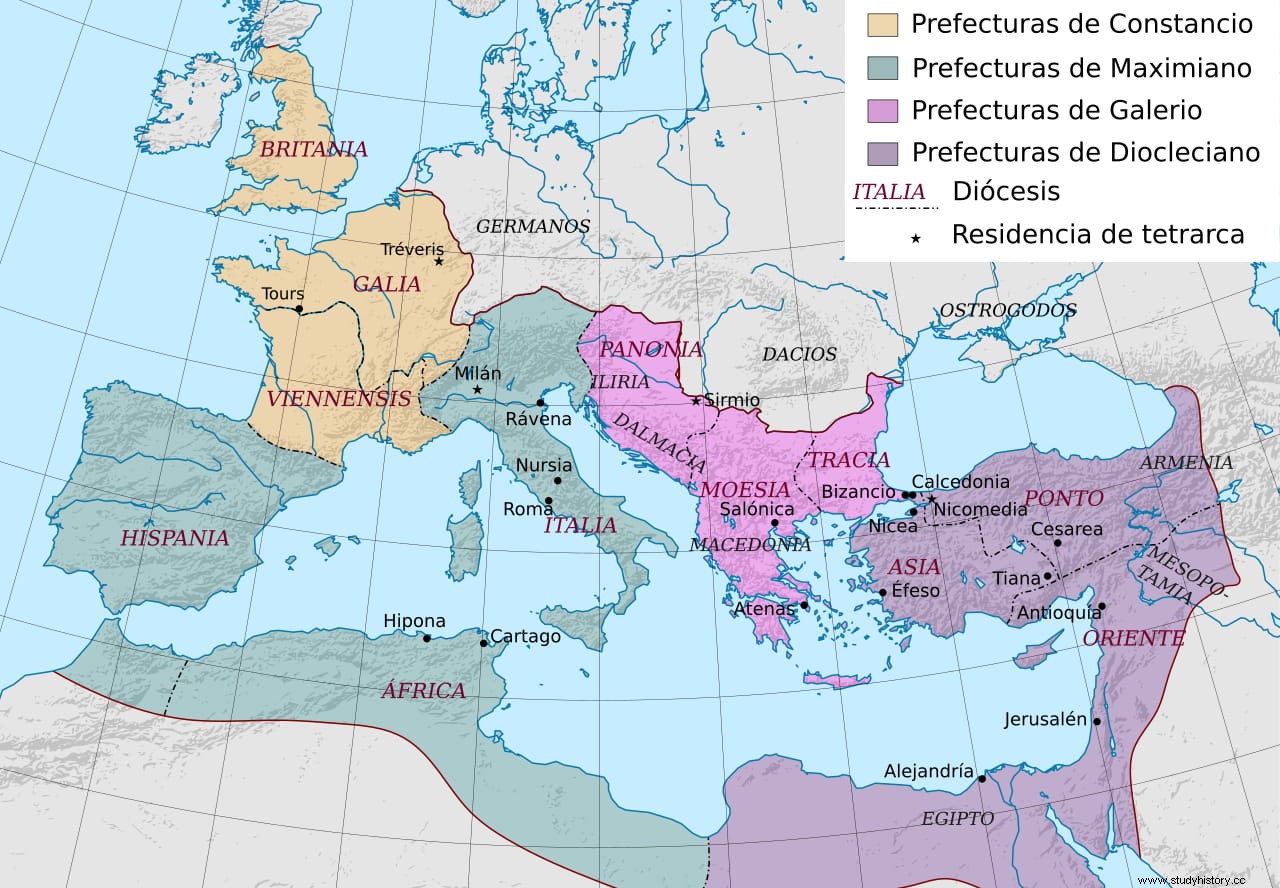
But it was only a mirage or a half truth. It is clear that stability did not depend so much on the institution as on the charisma and vision of Diocletian, who was the one who signed the decrees that affected the entire empire - he implanted the dominatu s, an absolutism that put an end to what remained of the empire conceived by Augustus- and that, curiously, in the end he would be the only emperor who left power voluntarily and peacefully to dedicate himself to cultivating his garden in Dalmatia. As Kovalyov says, the tetrarchy contained many artificial elements and when the augusts were missing everything fell apart; let's see it.
Chlorus died soon, the following year, fighting the Picts, so his Caesar, Severus, succeeded him as Augustus. But he was dissatisfied. Many considered that Daya and Severo had been appointed under the influence of Galerius with the hidden objective of increasing their personal power, when the preferable thing to ensure that stability was to have chosen the children of the deceased, who had the support of their respective armies. And, effectively, the legions of Chlorus preferred to acclaim his son Constantine, reopening the doors to the previous chaos. Galerius negotiated with him to accept him as Caesar.
Immediately Maxentius, the son of Maximian, also rebelled against Severus and, after defeating him in battle, took him prisoner to finish executing him in 307. Galerius marched against him, but could not defeat him and was forced to retreat. Maxentius and Constantine allied themselves and even became related when the latter married the daughter of the former. The two self-proclaimed Augustus, so there were now four; Maximian's attempt to convince Maxentius to desist was unsuccessful because the legions supported his son and he had to take refuge with Constantine. Only Daya remained faithful to his position as Caesar.
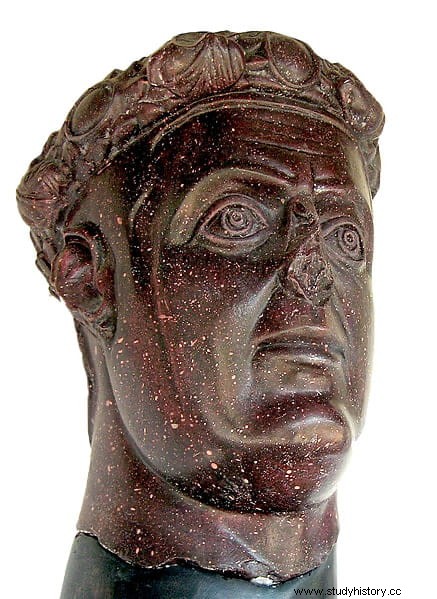
To find a solution, in November 308 Galerius convened an imperial conference in the fortress of Carnunto (Pannonia, present-day Austria), where it was agreed to rule out Maximian's candidacy (who aspired to regain power) and that the Augustans would be Galerius (in East) and Licinius (in the West), with Constantine and Daya as respective Caesars. Maxentius not only stayed out but was also declared a usurper, a real problem because in practice he controlled the Italian peninsula and Africa.
However, no one was happy. Constantine did not welcome Licinius ending up above him, nor did Daya, who was not even given the exact title of Caesar but an alternative one, filius augusti ("son of the august"). Likewise, Maximiano did not resign himself to the mission entrusted to fight Maxentius and, when the news arrived that Constantine had fallen in the Rhine against the Franks, he presented himself as his successor. However, the news was false and when they found out the legions remained faithful to Constantine, forcing Maximian to flee again. But he was caught and forced to take his own life in 310.
The following year, a sick and weakened Galerius declared an end to the persecution of Christians by legalizing his religion, and died soon after. With his death, the imposed political stability was completely dynamited. Constantine was engaged in wars in Gaul and Britain, but Daya seized Anatolia from Licinius, while Maxentius temporarily lost control of Africa due to the insurrection of a vicar named Domitius Alexander and had to favor the election of the bishop of Rome (Pope Melquiades) to gain the support of Christians and secure their position in Italy.
A position that, however, began to crumble due to its growing unpopularity, by decreeing high taxes. Fearing losing the upper hand on him, he undertook a campaign against Constantine in 311 under the guise of avenging the death of his father, Maximian. Constantine then agreed to an alliance with Licinius (to whom he gave in marriage to his sister Constancia de el)... which was considered an affront by Maximinus, who was the august and, in response, he colluded with Maxentius. The climate was one of full-scale civil war.
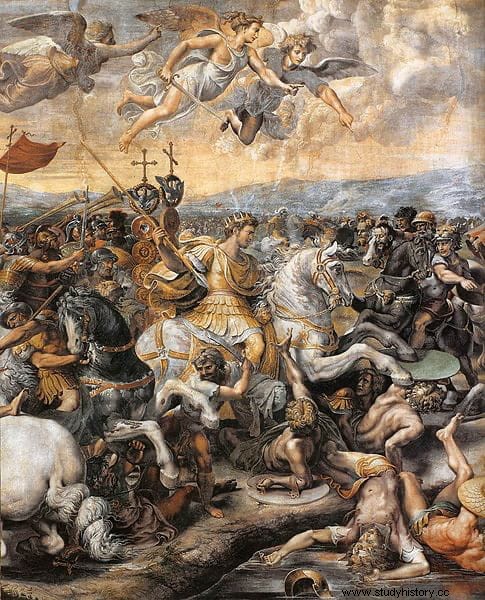
It broke out in the summer of 312 and favored Constantine, who won a decisive victory at the Battle of Milvian Bridge - according to tradition with divine support - against an army personally led by Maxentius. This perished during the chaos of save yourself, thus eliminating one of the elements that disturbed the tetrarchy. The other was also settled in the field of war, in this case between Daya, who, when Galerius died, was no longer satisfied with being Caesar and proclaimed himself Augustus, and Licinius, who was now Constantine's son-in-law and, therefore, had his alliance. .
The two sides clashed in successive clashes in Daya's favor until he suffered a disaster at Tzirallum in 313. He had to flee disguised as a slave but was relentlessly pursued and died along with his family that summer. Constantine and Licinius, the victors, set out to revive the Tetrarchy as Augustans by appointing Caesars. And that triggered another confrontation, since the first appointed Basiano, a senator who was married to his half-sister, which tilted the balance of power in his favor; something that Licinius was not willing to tolerate.
So, once again, things went sword in hand from 314 onwards. The war had inconclusive results, but it leaned slightly on the Constantinian side, so that in 317 they signed a truce for which Licinius recognized a pre-eminence of his companion, who, consequently, demanded the dismissal of the co-emperor who had meanwhile appointed the other, Valerius Valens. The tetrarchy then experienced a strange moment when it became a pentarchy, since Constantine took the opportunity to designate his sons Criuspus and Constantine II as Caesars, while Licinius chose his offspring, Licinius II.
Probably everyone was clear that it was a matter of time to face each other again and that happened between 320 and 321, when Licinius resumed the persecution of Christians in his territories, which his companion used as casus belli . The war did not break out openly until three years later and, after adverse beginnings, ended in Constantinian victory. The defeated and his co-emperor, Martinianus, were banished and finally executed, as was Licinius II. Constantine thus reunified the empire, remaining as the only Augustus; it was the end of the tetrarchy, a system that, in the words of Adrian Goldworthy, was effective due to the strength and solidarity of its members, but ultimately failed in its litmus test, succession.
